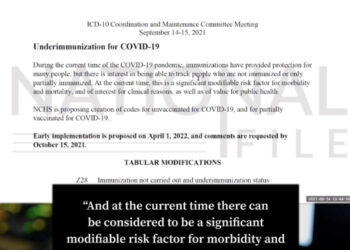Last Updated on November 4, 2019
Before he was a Democratic congressman championing the impeachment of President Donald Trump, Alcee Hastings was a federal district court judge who was successfully impeached for “undermining the public confidence in the integrity and impartiality of the judiciary.”
As Fox News reported last Thursday, Hastings (D-Florida) clashed with Republican lawmakers at a House Rules Committee meeting as Democrats refused to budge on their headlong rush towards impeachment.
While Hastings maintained that President Trump committed the high crimes and misdemeanors necessary to warrant impeachment, he himself was the only person present at the hearing who had been impeached for corruption.
As reported in the Senate.gov archives, Hastings was convicted on 8 of the 11 articles of impeachment brought before the Senate Trial Committee, and his plea to dismiss the charges was voted down 95 to 0.
Via Senate.gov:
In 1981, a federal grand jury indicted Judge Alcee L. Hastings, appointed to the federal district court in 1979, along with his friend William A. Borders, a Washington, D.C. lawyer. Hastings was charged with conspiracy and obstruction of justice for soliciting a $150,000 bribe in return for reducing the sentences of two mob-connected felons convicted in Hastings’ court. A year after Borders was convicted of conspiracy, the result of an FBI sting effort, Hastings’s case came before the criminal court. Despite Borders’ conviction, and the fact that Hastings had indeed reduced the sentences of the two felons, he was acquitted in a criminal court in 1983 and returned to his judicial post.
Subsequently, suspicions arose that Hastings had lied and falsified evidence during the trial in order to obtain an acquittal. A special committee of the 11th Circuit Court of Appeals began a new probe into the Hastings case. The resulting three-year investigation ended with the panel concluding that Hastings did indeed commit perjury, tamper with evidence, and conspire to gain financially by accepting bribes. The panel recommended further action to the U.S. Judicial Conference, which, in turn, informed the House of Representatives on March 17, 1987, that Judge Alcee Hastings should be impeached and removed from office.
On August 3, 1988, following an investigation by the House Judiciary Subcommittee on Criminal Justice, the House of Representatives voted 413 to 3 to adopt H. Res. 499, approving 17 articles of impeachment against Hastings, the greatest number of articles in any impeachment proceeding to date. Charges included conspiracy, bribery, perjury, falsifying documents, thwarting a criminal investigation, and undermining the public confidence “in the integrity and impartiality of the judiciary.” The Senate received the articles on August 9, 1988.
Hastings argued that the trial amounted to double jeopardy since he had already been acquitted in a court of law, but given that several of the charges against him were related to crimes of perjury and evidence falsification committed during the first trial, the motion was struck down.
The trial committee presented its report on October 2, 1989. Sixteen days later, the trial began in the U.S. Senate, with prosecution and defense given two hours to summarize their cases. The Senate deliberated in closed session on October 19, 1989. The following day, the Senate voted on 11 of the 17 articles of impeachment, convicting Hastings, by the necessary two-thirds vote, on 8 articles (1-5, 7-9). On two articles (6, 17) the vote fell short of the required majority to convict. On article 11, the Senate voted 95 not guilty to 0 guilty. Having achieved the necessary majority vote to convict on 8 articles, the Senate’s president pro tempore (Robert C. Byrd) ordered Hastings removed from office. The Senate did not vote to disqualify him from holding future office.
Four years later, Hastings was elected to the U.S. House of Representatives for the term beginning January 3, 1993. As a member of that body, on December 19, 1998, Hastings voted (on four articles of impeachment) against impeaching President William Jefferson Clinton.
Hastings has also made headlines in recent weeks for more recent transgressions. The Palm Beach Post reported that the lawmaker has been in a decades-long sexual relationship with a member of his congressional staff.
Hastings, 83, has employed a disbarred lawyer, Patricia Williams, on his congressional staff since at least 2000. She has been paid nearly $3 million in taxpayer-funded salary since that time, according to LegiStorm, which tracks the pay of congressional staff members.
Property records show Williams and Hastings bought a $700,000 house together near Boynton Beach in 2017.
Hastings was reportedly “unconcerned” about the appearance of impropriety because no charges have ever been brought against him, stating glibly: “However it looks, it’s been looking like that for 25 years.”
The Palm Beach Post notes that the House passed measures in 2018 barring Congress members from “having a sexual relationship with a member of his or her staff,” and the recommended punishment for those who violate the rule is “sanctions ranging from a letter of reproval to expulsion.”





















